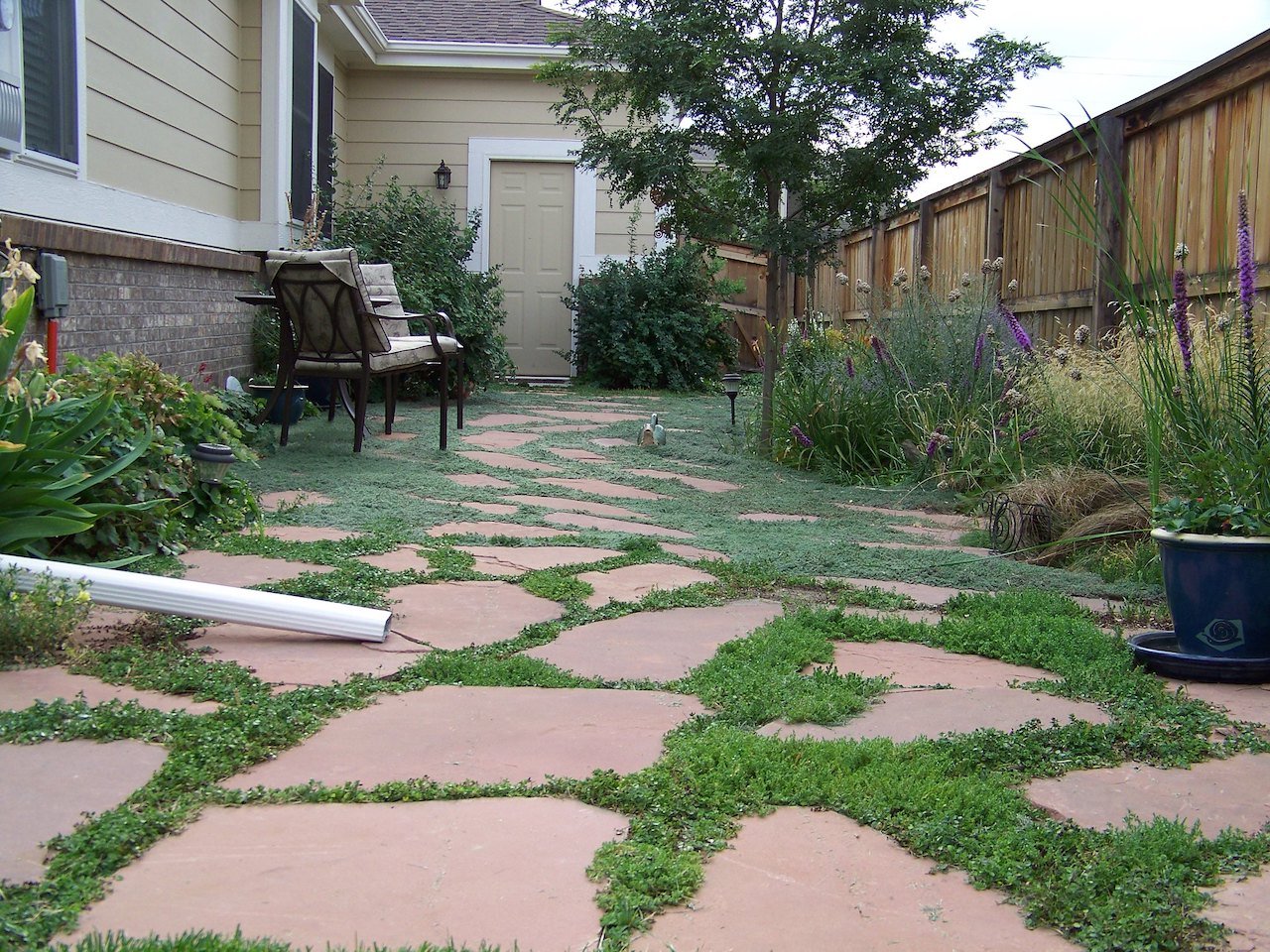
Denver has always had a tricky climate of cold winters, hot summers, heavy rains, hail, and drought. The soil ranges from sticky clay to rocky with little organic matter. And now, an historic megadrought entering its third decade. Given these challenges, if you live in Denver, you have special needs in planning a low-maintenance landscape. Follow our guide for success.
- Everything Begins With Water Usage
- Denver’s Climate is Unique
- Consider Xeriscaping
- The Best Cool-Season Grasses for Denver
- The Best Warm-Season Grasses for Denver
- Hardscaping
- Low-Maintenance Plants for the Front Yard
- Low-Maintenance Plants for the Backyard
- Denver Native Plants as a Grass Alternative
- Ground Covers as a Lawn Alternative in Colorado
- A Clover Lawn Solution
- When to Call a Professional Landscaper
- FAQs
Everything Begins With Water Usage
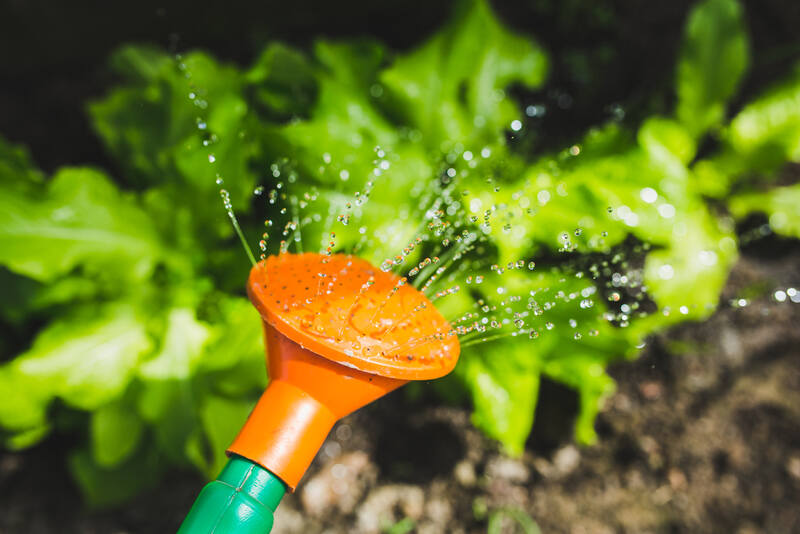
Water usage is critical in Denver, with residents facing a series of rules about when and how they water. What follows are essential lawn watering tips for Denver that will lower your water use (and your water bill) while keeping your lawn healthy.
From May 1 to Oct. 1, Denver residents must follow these rules:
- No watering between 10 a.m. and 6 p.m.
- Avoid watering in windy or rainy conditions.
- Repair leaky sprinklers within ten days.
- Water three days each week or fewer.
- Don’t allow water to pool in streets and alleys.
- Avoid sprinkler overspray onto roadways or sidewalks.
- Buy a hose nozzle with a shut-off valve for outdoor activities like washing the car.
As you water, be sure to do the following:
- Water enough to moisten the root zone (that is, the soil around the roots) without wasting water.
How to do this: Stick a screwdriver in the soil to ensure you’ve watered deeply enough.
- Allow the soil time to dry between watering so that roots have the opportunity to absorb oxygen.
How to do this: Don’t water until the grass lets you know it needs it. When footprints stay on the lawn or the grass starts to lose its normal color, it’s time.
Denver’s Climate is Unique
There are a series of things that make the climate in Denver different from other places, things to take into account as you make your landscaping decisions:
- Mile high: Certainly it is 5,280 feet above sea level, and that has an effect.
- Little rain: Only 8 to 15 inches per year.
- A lot of sun: It shines more than 300 days a year, which is more than they get in Miami or San Diego.
- Mild winters: The temperature averages 45 degrees in the winter, and regularly reaches 60 degrees. Among other things, that means snow doesn’t stay around; it melts quickly.
- Low humidity summers: Summer days are sun-filled and the evenings are cool, making them comfortable. The average temperature in August is only 86 degrees.
Denver Average Temperatures and Precipitation
| Month | High / Low | Precipitation |
| January | 47°F / 16°F | 0.64 in. |
| February | 49°F / 18°F | 0.73 in. |
| March | 56°F / 25°F | 1.88 in. |
| April | 62°F / 33°F | 2.20 in. |
| May | 72°F / 42°F | 2.56 in. |
| June | 81°F / 50°F | 2.05 in. |
| July | 88°F / 56°F | 1.68 in. |
| August | 86°F / 54°F | 2.01 in. |
| September | 78°F / 44°F | 1.13 in. |
| October | 66°F / 33°F | 1.43 in. |
| November | 54°F / 23°F | 1.09 in. |
| December | 46°F / 16°F | 0.83 in. |
Source: Denver.org
Consider Xeriscaping
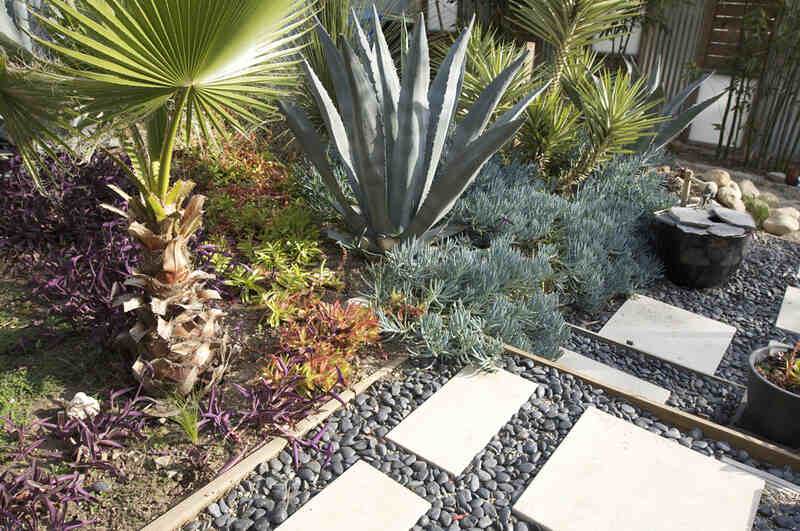
The Denver Water Department created “xeriscaping” in 1981, combining “landscape” with the Greek prefix “xero,” meaning “dry.” It is a landscaping design program that reduces water use as much as possible. Denver needs to reduce its consumption of water, and xeriscaping can reduce water usage by up to 60 percent.
You may wonder, “Why such a focus on outdoor landscaping?” Why not lower your gallons per flush or use the washing machine less? Here’s why: Water is used more for landscaping than for anything else:
Source: Denver Water/2011 Residential End use Study
Don’t be intimidated. Xeriscaping is for beginners and advanced gardeners alike. We’ll show you how.
The basics of xeriscaping:
- Soil. Consider it when you decide what to plant. Get a soil test to be sure.
- Sun. Determine which part of the yard gets the most.
- Slopes. Where do they lead? It determines the runoff of what little water you use.
- Companion planting. Look for the plants that complement each other. If you place the drought-resistant plants higher in the yard, the plants that need more water will benefit from the runoff.
- Group plants with similar water needs together.
- Separate flower beds with borders of mulch, pavers, or stones.
Plants for Xeriscapes in Denver
- Carol Mackie daphne
- Emerald queen manzanita
- Hancock coralberry
- Lavender
- Lena broom
Source: Denver Water
Get more city-specific tips in our article, “How to Xeriscape Your Denver Yard.”
The Best Cool-Season Grasses for Denver
When it comes to grass, longer grass is more water efficient for homeowners. Cool season grasses should be kept from 2.5 to 3.5 inches high:
Tall Fescue
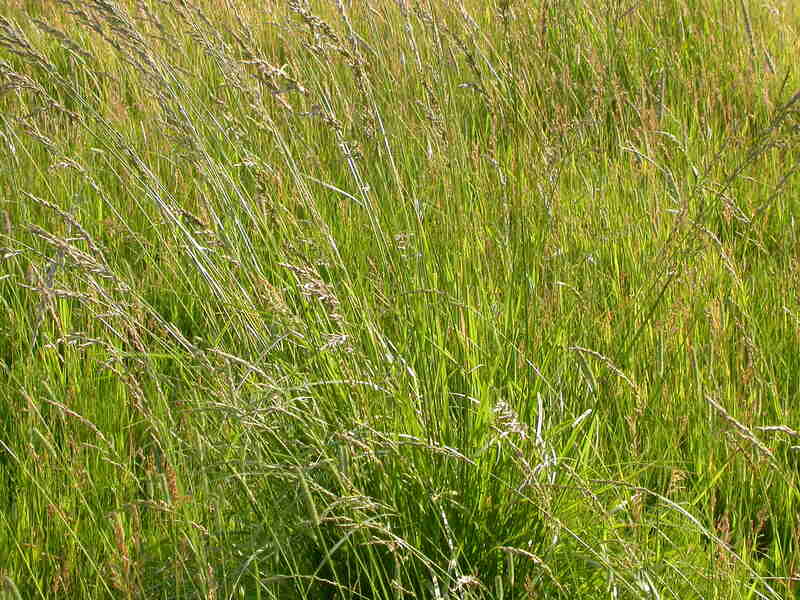
Photo Credit: Matt Lavin / Flickr / CC BY-SA 2.0
Tall fescue can withstand cold, heat, drought, and shade. With its deep root structure, it needs little watering. Because of its high tolerance for foot traffic, it is a good grass for a house of kids and pets.
- Spreads By: Bunch-forming grass
- Shade Tolerance: Low to moderate
- Drought Tolerance: High
- Foot Traffic Tolerance: Moderate to high
- Maintenance Needs: Low
Fine Fescue
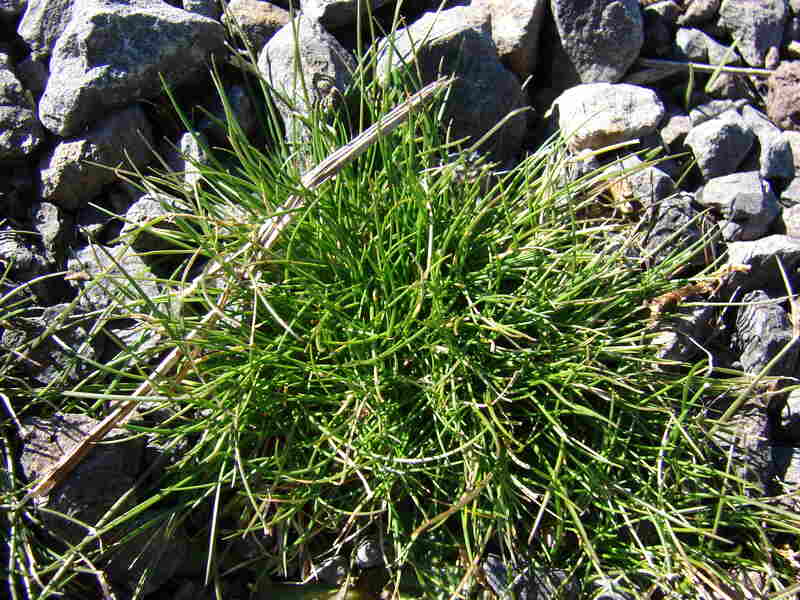
Photo Credit: Forest and Kim Starr / Flickr / CC BY 2.0
Fine fescue is a low-maintenance grass that is popular in Denver because it grows well in high elevations. The grass has dense turf, making it more difficult to cut. People find a need to regularly sharpen the blades on their lawn mower. It is a good grass to grow in areas that get a lot of shade.
- Spreads By: Bunch-forming grass
- Shade Tolerance: High
- Drought Tolerance: High
- Foot Traffic Tolerance: Low
- Maintenance Needs: Low
Kentucky Bluegrass
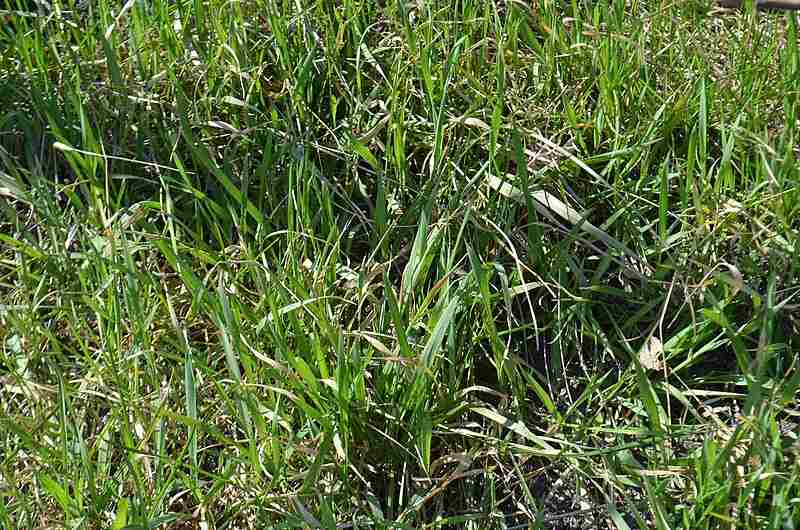
Photo Credit: Ethan2039 / Wikimedia Commons / CC BY-SA 4.0
Kentucky bluegrass is one of the most popular grasses in Denver. It is dense and durable and self-repairs from wear with underground roots called rhizomes. Kentucky bluegrass has fine, blue-green blades that people like walking on barefoot.
- Spreads By: Rhizomes
- Shade Tolerance: Low to moderate
- Drought Tolerance: Low to moderate
- Foot Traffic Tolerance: Moderate, depending on the variety
- Maintenance Needs: Moderate, but may require more frequent watering due to its shallow root system. It is a popular grass in Denver, but it is not a low-water grass.
Perennial Ryegrass
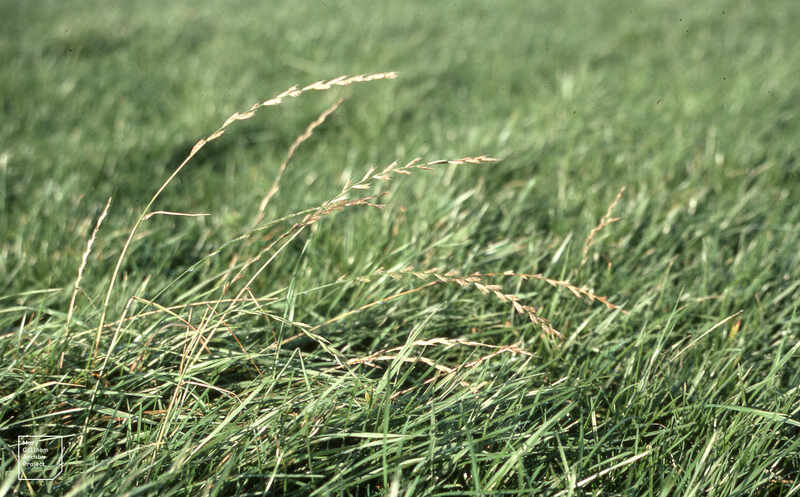
Photo Credit: Dr Mary Gillham Archive Project / Flickr / CC BY 2.0
Perennial ryegrass is a durable grass, making it a good one for yards with heavy foot traffic. It is susceptible to fatal disease or pest infestations like gray snow mold and Japanese beetles. Cold, dry winters can kill it.
- Spreads By: Bunch-forming grass
- Shade Tolerance: Low
- Drought Tolerance: Low
- Foot Traffic Tolerance: High
- Maintenance Needs: Low to moderate, but high potential for disease
The Best Warm-Season Grasses for Denver
Longer is better for warm season grasses, too. They should be from 1 to 3 inches high
Buffalograss
Buffalograss is a warm-season grass that doesn’t grow above 6,500 feet, limiting where it can be used in Denver. Where it can be used, it is an excellent heat- and drought-resistant option. It isn’t a grass that does well with heavy foot traffic, and it needs soil that is well-drained.
- Spreads By: Stolons and seeds
- Shade Tolerance: Low
- Drought Tolerance: High
- Foot Traffic Tolerance: Low
- Maintenance Needs: Low, though if over-fertilized, it’s prone to excessive weed growth
Blue Grama
Blue grama is a low-maintenance turf that can withstand heat and drought like a champ. It enjoys full sunlight and has little shade tolerance.
- Spreads By: Bunchgrass
- Shade Tolerance: Low
- Drought Tolerance: High
- Foot Traffic Tolerance: Low during dormancy, fair during active growth
- Maintenance Needs: Low, but can become weedy
Hardscaping
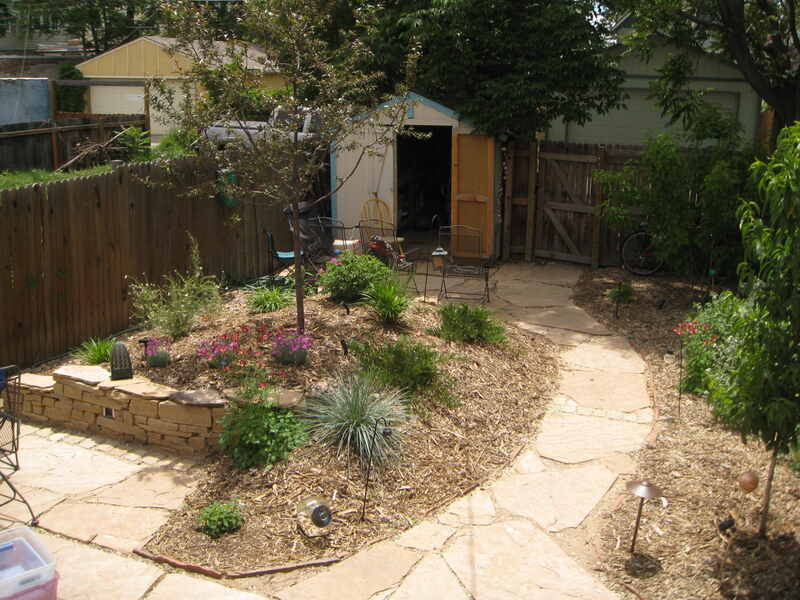
Photo Credit: Jay@MorphoLA / Flickr / CC BY 2.0
Hardscape is the “hard” part of your landscape, such as stone, concrete and wood, and it’s used in such features as patios and porches or walkways and walls. While there have long been such things in landscaping, the consideration of hardscaping has become even more of a factor, with some eye-catching designs that bring function as well as appeal.
The cost to homeowners of putting in a patio or a walkway is the same, $8.69 to $22.18 per square foot for labor and materials, according to a LawnStarter study.
A hardscaping project would cost, according to LawnStarter research:
| Hardscaping Services | Average Cost |
| Decks | $3,918 – $10,539 |
| Fencing | $1,330 – $5,550 |
| Fire pits | $500 – $3,433 |
| Gazebos | $5,364 – $9,027 |
| Landscape curbing | $988 – $1,611 |
| Landscape lighting | $188 – $325 per light |
| Outdoor kitchens | $5,562 – $17,588 |
| Walkways | $8.69 – $22.18 per square foot |
| Patios | $2,363 – $5,909 |
| Pergolas | $2,216 – $8,959 |
| Ponds | $1,382 – $3,520 |
| Retaining walls | $4,025 – $8,711 |
| Water fountains/waterfalls | $1,141 – $3,692 |
Low-Maintenance Plants for the Front Yard
LawnStarter research has found low-maintenance plants for both the front yard and backyard that are good choices for a DIY project:
- Boxwood shrubs: Depending on the type, these evergreen shrubs can grow between 2 and 12 feet tall. Use them as foundation plants, living fences, pathway borders, and focal pieces. Boxwoods are deer-resistant and only need watering biweekly and pruning once a year.
- Hydrangeas: Overall, hydrangeas equal easy care — as long as they receive partial shade, are planted in well-draining soil, and get the right amount of water. They also make a colorful addition to a cut flower garden. Prune annually and water at least once per week.
- Daylilies: Known for their trumpet-shaped flowers, daylilies are low-maintenance plants that thrive on full sun and in just about any soil type. Natural rainfall should provide them with enough water, except during drought conditions.
- Sedge: Available in more than 100 varieties, sedges work best in wetland areas. If you have a rain garden that stays wet or moist, these might be a good fit. Be careful when cutting back sedge, as it may not recover. Instead, experts suggest combing through the plant with gloved hands to find and remove dead leaves.
- Hostas: Able to survive on deep, occasional watering, hostas are shade-loving plants that should be surrounded by mulch to help hold in water. Reliable and hardy, prune only if you notice discoloration, damage, or dead flowers.
- Spirea: A drought-tolerant, flowering shrub, spirea grows quickly and does best in full sun and well-drained soil. It needs little water and pruning once per year.
Low-Maintenance Plants for the Backyard
- Creeping sedum: Able to grow in part shade and part sun, in sandy and rocky soil. Good in rock gardens or between stone pavers. Needs little care and attracts pollinators, such as hummingbirds and butterflies.
- Black-eyed Susans: Easy to grow in full sun and a variety of soils. Drought-resistant, though a little water during dry spells helps maintain the blooms that make the Black-eyed Susan famous. Works well in xeriscapes.
- Fescue: Replace traditional turfgrass with fescue in order to have to mow less. Grows in clumps and doesn’t need much water; fertilize once every fall.
- Liriope: Good border plant in hardscapes. Liriope spreads fast and produces dark green leaves and blooms in late summer. Can be a good ground cover underneath trees and shrubs and along slopes. Thrives in both shade gardens and full sun, in any type of soil.
- Dianthus: Fragrant flowers that smell of cloves and floral notes. Dianthus needs little water, no mulch, and light fertilization every couple months during the growing season.
- Coreopsis: Also called “tickseed,” it is a good edging plant for pathways. Grows best in full sun and a variety of soil types. Prune them in late summer.
Denver Native Plants as a Grass Alternative
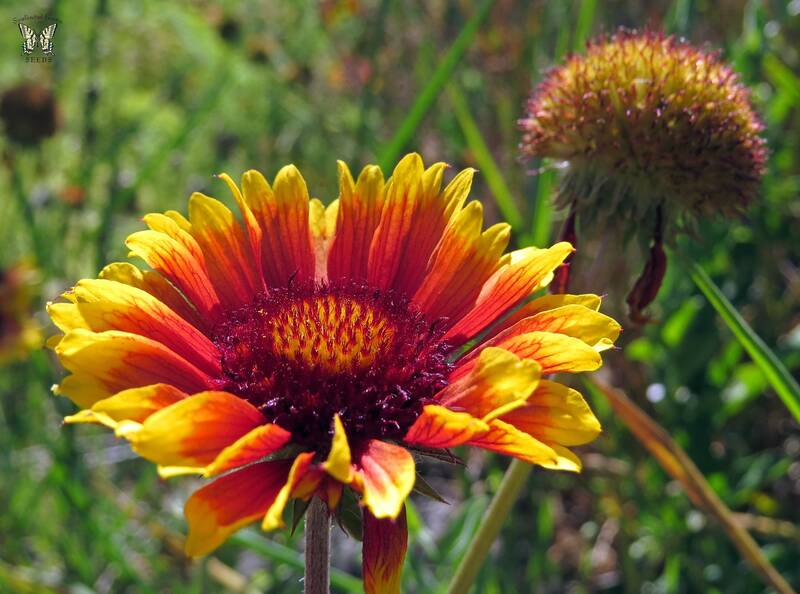
Reducing or removing a traditional lawn is one of the best low-maintenance landscaping strategies in Denver. Instead of a thirsty lawn, opt for a swath of buffalograss or blue grama flanked by wide perennial borders filled with wildlife-friendly, low-water native plants. What are native plants, you ask?
Native plants are those that existed before the Europeans arrived. They developed in a way that doesn’t call for a lot of maintenance; they had to grow in the wild, so they adapted to it. Today, they not only connect you with Denver’s heritage, but also are the very definition of low maintenance.
Here are a few of the best Denver native plants to help reduce your lawn size in Colorado:
| Perennials | Size | Flowers |
| Blanketflower (Gaillardia aristata) | 12” x 12” | Yellow, red |
| Blue Mist Penstemon (Penstemon virens) | 12” x 12” | Blue, purple |
| Chocolate Flower (Berlandiera lyrata) | 18” x 18” | Yellow |
| Canada Goldenrod (Solidago canadensis) | 30” x 18” | Yellow |
| Prairie coneflower (Ratibida columnifera) | 18” x 12” | Yellow |
| Shrubs | ||
| Serviceberry (Amelanchier alnifolia) | 12’ x 6’ | White |
| Wax Currant (Ribes cereum) | 4’ x 3’ | Pink, cream |
| Cacti and Succulents | ||
| Prickly Pear (Opuntia macrorhiza) | 5” x 18” | Yellow, apricot |
| Plains Yucca (Yucca glauca) | 2’x 2’ | Cream |
Source: Colorado Native Plant Society
Ground Covers as a Lawn Alternative in Colorado
In addition to perennials, shrubs, and cacti, groundcovers are another obvious choice for reducing your traditional lawn area. If you want other lawn alternatives, take a serious look at using some of these best ground cover plants for Colorado. There are several reasons for making this a part of your landscaping design:
- Thick roots and leaves. They stop soil erosion and crowd out weeds.
- Less water is needed than with turf.
- No mowing is required, making them an especially good choice for areas that slope.
Good Ground Covers for Denver:
- Himalayan border jewel
- Moneywort
- Periwinkle
- Prostrate junipers
- Pussytoes
- Wine Cups
- Wooly thyme
Shrubs That Make Good Ground Covers for Denver:
- Creeping mahonia
- Gro-Low fragrant sumac
A Clover Lawn Solution
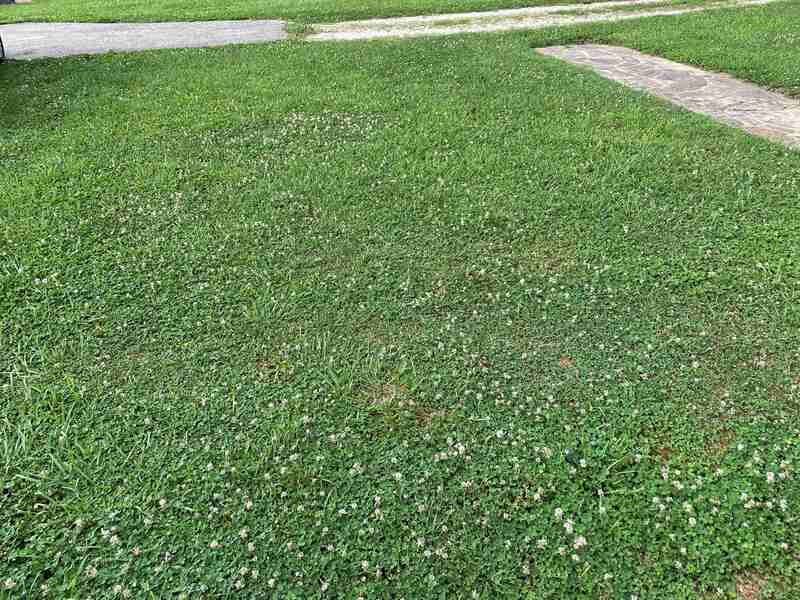
Photo Credit: Brenda Ryan / LawnStarter
If you are looking to save water, time, and money on your landscaping, plant white clover in the lawn in Denver or anywhere in the Front Range. It is as simple as mowing the lawn a little lower, spreading the seed, and watering for 7-10 days. The benefits of a clover lawn, as uncovered by LawnStarter:
- Fertilizes the lawn
- Promotes a healthy lawn, drawing in trace minerals, then dispersing them through decomposition, reducing the need for fertilizer, herbicide, and chemicals.
- Reduces weeds by crowding them out.
- Mutually beneficial with grass
- Drought tolerant. It has deep roots that can reach down for water.
- Pollinator friendly, especially for honeybees.
When to Call a Professional Landscaper
Landscaping your yard can be a fun DIY project. However, if you are going to add hardscaping (patios, porches, pathways, retaining walls) or features (a pond), you should consider bringing in a local landscaping professional.
They will know:
- What plants need less water. This drives so much of landscaping in Denver.
- Which invasive species to avoid. The list is constantly changing, with the U.S. Geological Survey leading an effort to combat them.
- How to operate specialized equipment, and they have experience at it.
FAQs
Like ground cover, mulch is an attractive, low-maintenance landscaping option. It smothers weeds and can help prevent soil erosion. It also helps keep moisture in the soil and protects the roots of your plants from excessive heat.
Organic mulch has the added benefit of improving the soil as it decomposes. Bark, wood chips, leaves, and straw or hay are all examples of organic mulch.
Deer certainly do make their way into the backyards of homes in the Denver area. They will eat your plants, strip the bark from your trees, and leave droppings that can contain E. coli. There are plants that act as deer-deterrents:
● Lamb’s ear
● Lavender
● Penstemon
● Purple coneflower
● Russian sage
● Salvia
There are also trees and shrubs that deer don’t like:
● Colorado blue spruce (It also happens to be one of the best native trees to plant in Denver.)
● Common juniper
● Lilac
● Pinyon pine
● Sumac
Yes, there are trees you don’t want to plant in Denver, unless you enjoy paying to have them removed. These are the worst trees to plant in Denver:
● Quaking aspen. It constantly sends out root sprouts that will keep popping up in your yard.
● Siberian elm. Its brittle branches and limbs break in heavy winds or from the heavy snow that comes in winter storms. They’re also highly susceptible to disease.
● Tree of heaven. An aggressive tree that releases a chemical that kills plants growing in close proximity. Its flowers are said to smell like cat urine.
● Russian olive. An invasive tree that has more seeds than other trees and grows so quickly that it crowds out other plants. It is susceptible to canker diseases and verticillium wilt.
● Tamarisk. A nonnative plant that is considered invasive throughout the West. It hoards water, light, and nutrients while giving off large amounts of salt that damage other plants.
A Call to Action
Landscaping has always been a challenge in the unique climate of Denver, and with the historic water issues, it has become more so. To save yourself problems later, you want to take the time to plan how you will meet your goals in landscaping, goals that include a low-maintenance yard.
You can contact a Denver care professional, or you can DIY. But take action: Make a plan, and follow it.
Main Image Credit: Patrick Standish / Flickr / CC BY 2.0.